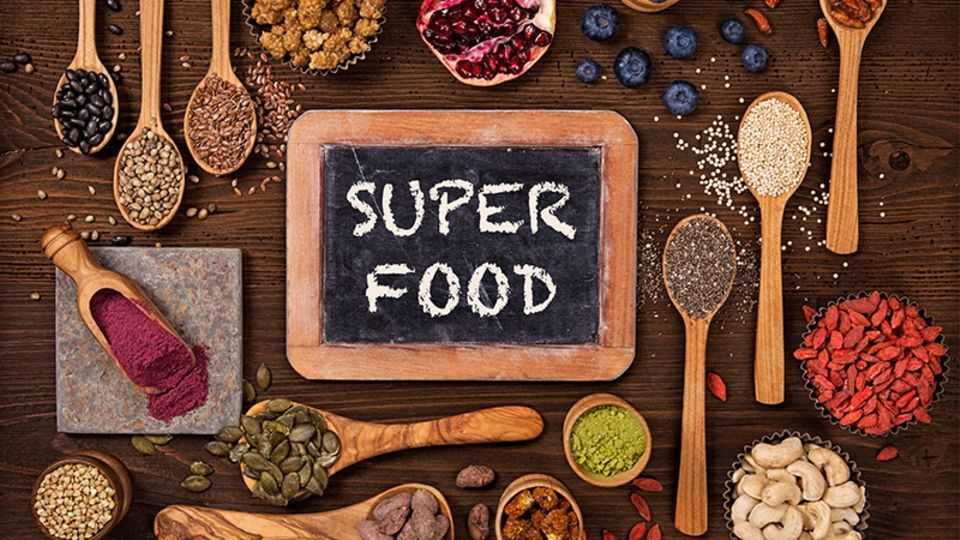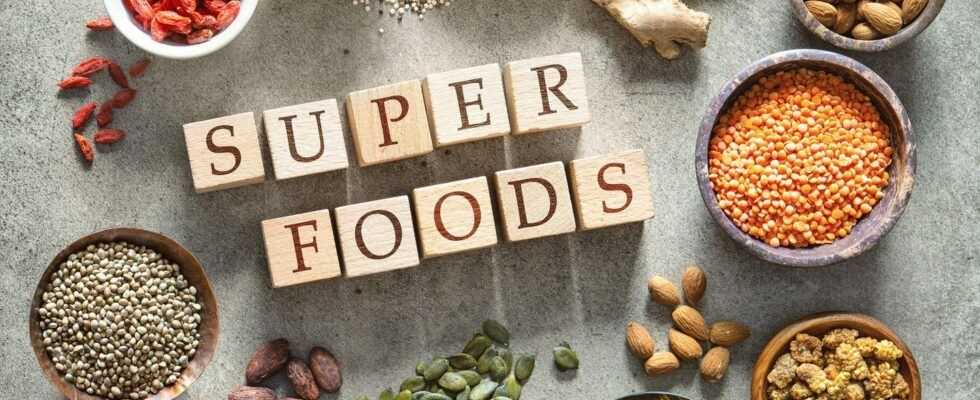Local superfoods
Powerhouses from the region
© Alexander Raths / Shutterstock
Superfoods from distant lands are still trendy. But our local superfood can easily keep up. How you can replace açai, matcha and co. Environmentally friendly and regionally, we show you in the article.
Key facts at a glance
- Superfoods such as goji berries or chia seeds are marketed as particularly nutrient-rich and are supposed to keep you fit and healthy.
- However, exotic superfoods pollute the environment due to long transport routes and are often very expensive.
- Local superfoods such as blueberries, millet, walnuts and the like can replace exotic foods from distant countries in an inexpensive and environmentally friendly way and are just as rich in nutrients.
Superfoods: You should above-average rich in nutrients be and keep fit and healthy. Did you ever hear something about exotic superfoods, like Goji berries, chia seeds or açai berries, voices quickly became loud that chalked up the long haulage from distant countries and, last but not least, its expensive price. And rightly so: there are enough of them in this country Local superfoods that are at least as rich in nutrients and also fresher, cheaper and more environmentally friendly are. In this article we will show you which powerhouses grow (almost) right on our doorstep and which exotic ones they can easily replace.
Benefits of local superfoods
The term “superfood” was made originally invented by the food industryin order to be able to better market predominantly exotic foods with a high nutrient content. The products are advertised by the manufacturers with numerous health promises: They should make you slim, fit, healthy and beautiful, for example. However, these health benefits have not been scientifically proven. Above all, could No significant added health value can be determined between the exotic and local foods.
In addition, many of the exotic self-proclaimed superfoods in Germany are sold in dried form, which means that many of the vitamins advertised are lost. Other negative aspects of goji berries, açai berries and the like are their price and the environmental pollution caused by long transport routes. Sometimes you only pay a fraction for local superfoods and local cultivation also protects the environment. So bring on the domestic alternatives!
List of domestic superfoods
- Mustard
- Nettle
- Lamb’s lettuce
- Kale
- Blueberry
- raspberry
- currant
- linseed
- horseradish
- Beetroot
- parsnip
- Purslane
- Radicchio
- Sunflower seeds
- Jerusalem artichoke
- Walnuts
Our top 5 alternatives to the most popular superfoods
1. Wild herbs instead of matcha
The green matcha powder is mainly used for cooking, baking or smoothies. Matcha is also marketed as a healthy superfood, claiming it would lower blood pressure, improve cholesterol, and reduce stress. Matcha is simply a powdered green tea. The tea does contain that secondary plant substance catechin as well as the Vitamins C, D, A and E., but is no better positioned than, for example, regional teas such as bitter foam herb, watercress, Pfennigkraut, Gundermann, chickweed and nettle seeds.
2. Blueberry instead of açai berry
Whether a fancy breakfast bowl or purple powder for shakes and co .: The açai berry from Brazil has become an all-time superstar in healthy kitchens. First of all, their high content of Anthocyanins helped it gain a reputation as a superfood. The blue plant pigment anthocyanin protects the body’s cells from oxidation processes, which ensures healthy cells. However, this dye is also found in domestic foods that are blue and purple in color. Blueberries, for example, but also elderberries and blackberries, blue grapes and red cabbage are in no way inferior to the açai berries.
3. Flax seeds instead of chia seeds
Manufacturers of chia seeds often advertise a high content of healthy onesOmega-3 fatty acids, protein and fiber. Our local linseed trumps the sister from the south in some points. Flaxseed not only contains more alpha-linolenic acid (an omega-3 fatty acid), it also contains more Potassium and vitamin E.. When it comes to fiber, flax seeds are in no way inferior to chia seeds. When buying flax seeds, however, you should pay attention to the origin: some flax seeds on supermarket shelves are imported goods from China.
4. Black currant instead of goji berries
In traditional medicine, the Asian goji berry is said to have a healing effect on diseases such as hyperglycaemia (high blood sugar levels) or liver and kidney dysfunction. In addition to a high content of Calcium and iron the goji berry is also rich in vitamin C. There, however, the black currant can definitely outshine its Asian counterpart. Its antioxidant, i.e. cell-protecting effect, also exceeds that of the goji berry.
Video tip: You can eat healthily with these foods!
If you want to find out more about superfoods, you can watch our video.
5. Millet instead of quinoa
Quinoa is especially popular in vegan kitchens because of its high Iron and protein content and the good biological value (absorption capacity into the body) is used a lot. In addition to the protein content, the South American grain alternative trumps with the fact that it does not contain gluten and thus ideal for people with gluten intolerance is. Our local alternative, which is in no way inferior to quinoa, is millet. On the contrary: Both the zinc and iron content of millet are higher than that of quinoa. Old varieties of the German alternative are also gluten-free, have a comparable macronutrient distribution and the same vitamin E content as the Brazilian exotic.
The most delicious recipes with local vegetables
31 images
Sources: verbrauchzentrale.de and ecodemy.de

